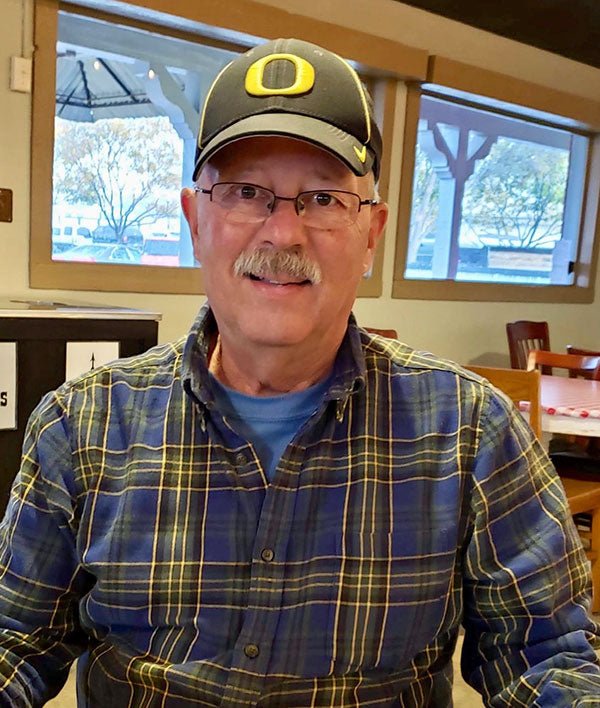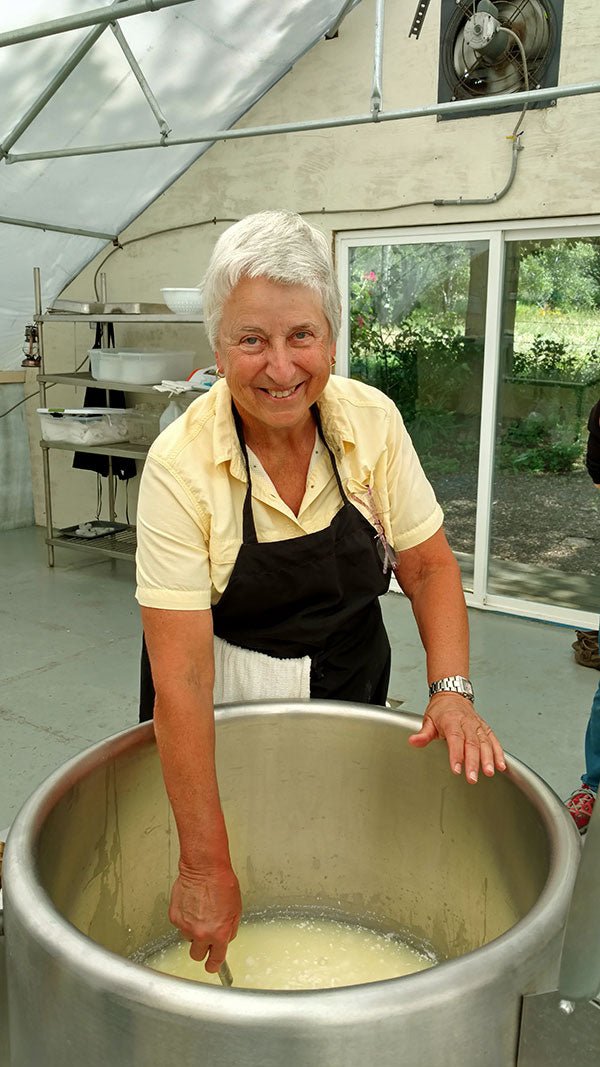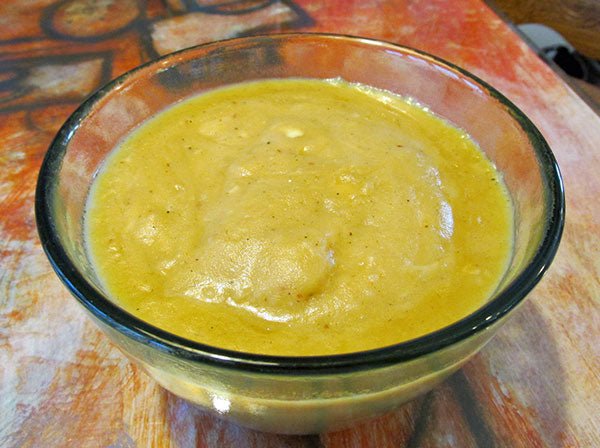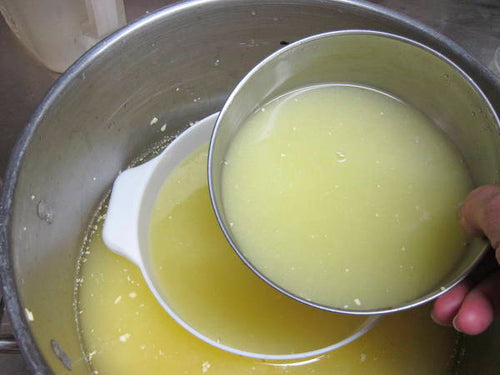
Tom Osborne
The best part of having a blog like this one is when we put folks together who had no idea there were other cheese makers in their area. We found Tom Osborne when he told us he saw our recent interview with Lisa Wilson and, hopefully, some of you will let us know you saw this article about Tom.
As always, we are impressed by how interesting and multi-talented cheese makers can be. Tom is a veritable “force of nature,” with a passion for good food and a wide variety of hobbies. We wish we lived closer to him so we could go to one of his famous BBQ parties!

Tom’s Story
We live in Libby, Montana although the actual town of Libby is 35 miles west of us. The other nearest town is Kalispell which is 50 miles to the east.

From an early age I have had a passion for cooking.
I love Texas BBQ and have been a pit master for over 30 years. (Pitmaster is a title given to someone in the BBQ world by his peers after spending years perfecting his or her skills using a pit smoker. It is strictly honorary.) I have an annual BBQ at my place where I prepare between 100-150 lbs of meat.
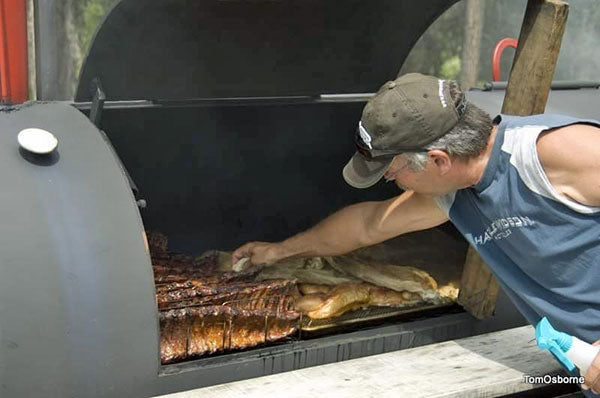





In high school and college I earned money by working in restaurants. After college I went into the healthcare field as an administrator and ultimately owned healthcare facilities in Oregon, Washington, California and Florida.
When I retired at an early age, I decided to pursue my love of cooking and enrolled in the Culinary Arts program at Clark College in Vancouver, Washington. I completed the two year program in one year.
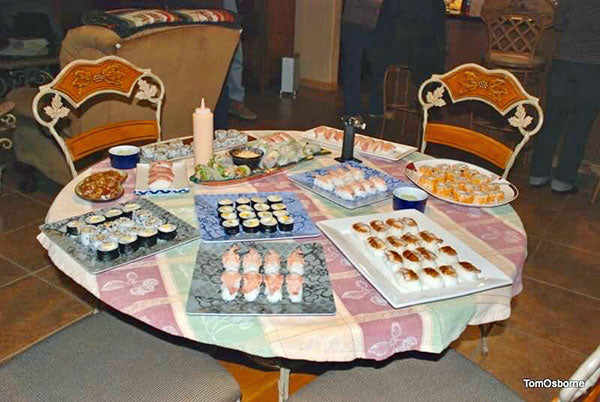
I love sushi. A friend of mine planned a sushi party and then asked me if I would make it. I did 4 types of Nigiri sushi – tuna, sweet shrimp, salmon & eel, 2 kinds of California rolls, cucumber rolls, spring rolls & sashimi. Toooooooo much work!


In addition, I enrolled in their one year meat cutting class and completed that the same year. I started curing my own meats soon afterwards – dry salami, prosciutto, bacon, coppa, pastrami and many more.

Starting at the top with my Manchego cheese and proceeding clockwise: Coppa, Prosciutto, Saucisson Sec. I dry cured all the charcuterie.
While in culinary arts, I made a simple fresh cheese (paneer) for a class assignment. The instructor was impressed and asked me to research other fresh cheeses that didn’t require aging and present it to the class. I did a presentation for fresh mozzarella and queso fresco. That assignment piqued my interest in cheese making.
My first attempt at aged cheese was not very successful. I attempted a cheddar and Monterey Jack. It seemed like a lot of work to prepare, a long time to check results, and utter disappointment with the final product. I gave up on cheese making for a number of years.
Then, a few years ago, the bug hit me to try my hand at cheese making again. I’ve made cheddar and jack again with good results but my favorites that I make regularly are Manchego, feta, and multiple varieties of fresh cheese.
Stages of feta:




When I decided to try making cheese at home, I did a lot of research online and read Artisan Cheese Making at Home by Mary Karlin and Ed Anderson. My most used resource has been the recipes on the New England Cheese Making Supply website (cheesemaking.com). The recipes are in-depth and precise.

Fresh cheese with garlic, chives and red pepper flakes. The recipe came from Grit.com.

Manchego

Cotija is a dry cheese that I love to make for street tacos.


I buy my milk direct from a dairy in Kalispell. Kalispell Kreamery is a family run farm which produces, processes and distributes it’s milk. The milk is pasteurized but not homogenized.
I use two different “cheese caves.” One is a wine cooler that is used for my feta and fresh cheese. The other is my home crawl space. It is deep enough to walk around in and maintains a year around temperature of 52-54F with the humidity between 60-90% if I leave the air vents closed. I use that for the Manchego.
My cheese press is a Cheesypress. It is a screw type press that allows me to press cheese up to 50 lbs of pressure.

My goal for my personal cheese making is to make a blue cheese. When our youngest daughter was going to Southern Oregon University in Ashland, or, we would stop in Central Point at the Rogue River Creamery and load up on cheese curds, white cheddar, hard jack, and my ultimate favorite, a full round of their blue cheese. They just won the World Cheese Award for the best blue cheese in the world (Rogue River Blue). That is my inspiration and goal!

With my wife, Carolyn
My advice to people just getting started making cheese is to select a proven recipe from a reliable source and follow the recipe to the letter. Pick a cheese that is relatively easy to make and doesn’t take months to age. Make sure that before getting started you sanitize everything that is going to come in contact with your milk – pots, utensils, thermometer, strainer, cheese press, etc. Nothing worse than to have your cheese spoil after all the time put in to making it.
Make a cheese log and write down everything that is crucial to making each batch of cheese. I use a log I found online called the Curd-Nerd Cheese Log. You can find it at Curd-Nerd.com.
Other interests:
I spend a lot of time in the Montana back country. I love to fish. Where I live in Northwest Montana there are a dozen lakes less than 10 miles from my home.

I also spend lots of time at the coast. (We winter on South Padre Island, Texas.) Our main quarry is Redfish, Black Drum, Speckled Sea Trout & Red Snapper.

I was throwing a bait net in Laguna Madre on South Padre Island. I catch my own bait fish before going out fishing. The tan shin guards you see in the pic are to protect my legs from stingrays. They’re not as big as the one that killed Steve Irwin, The Crocodile Hunter.

I am a upland bird hunter and have a fantastic bird dog and best friend, Carlie. We like to hunt Pheasant, Chukar, Grouse & Hungarian Partridge.

With Carlie, an English Springer Spaniel
Antique cars are a passion.

1957 Ford Thunderbird
I also like riding my motorcycle on the back roads of NW Montana. I have a Harley Davidson Road King Classic. It’s custom painted with bird hunting art and of course my dog’s portrait.

The artwork on my Harley was done by Jason Prouty, an artist who did a lot of the artwork in the houses on the TV show Extreme Home Makeover.
The little bird on the back fender is an English sparrow my wife rescued as a chick. They live an average of 2 years. Cheepie lived nine years.































